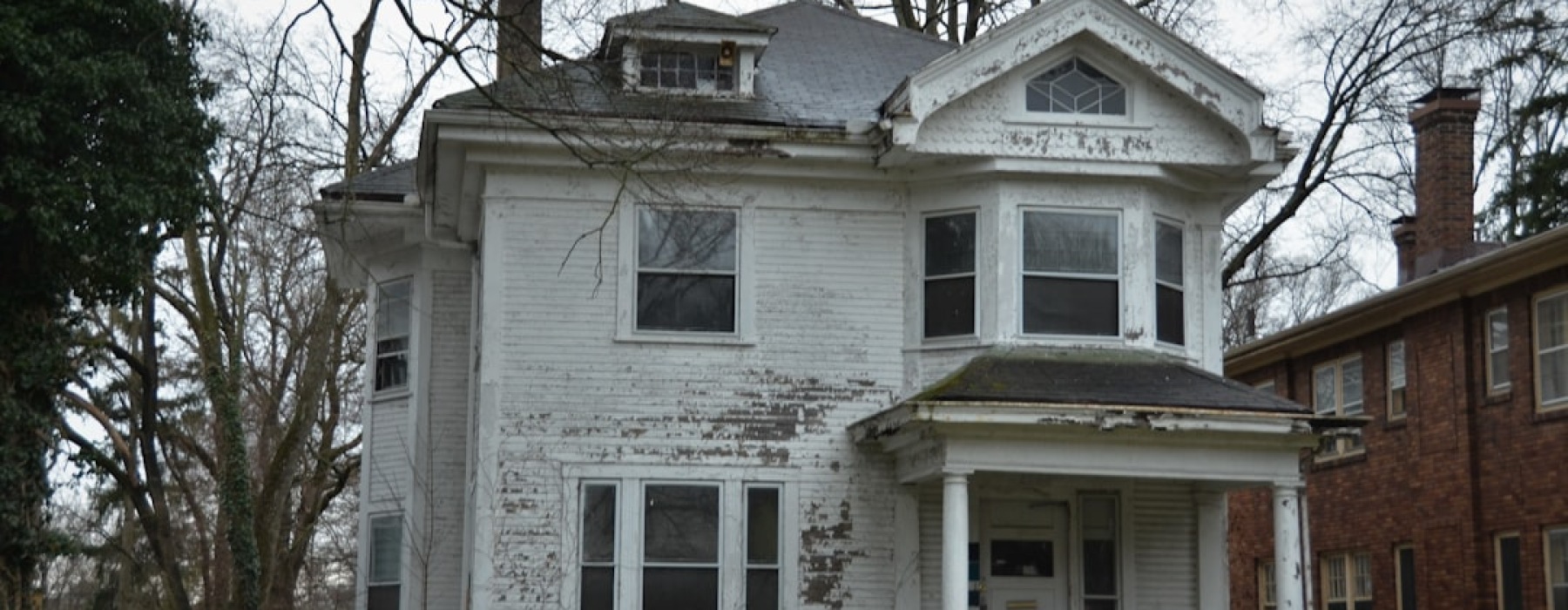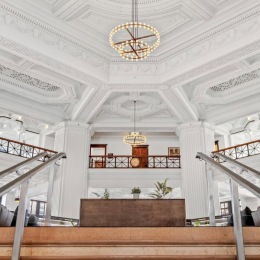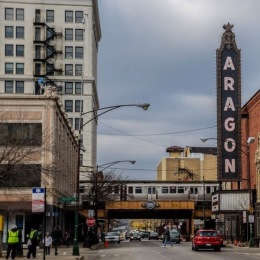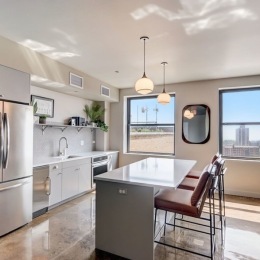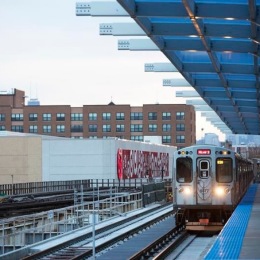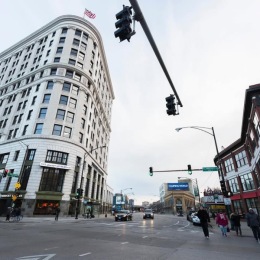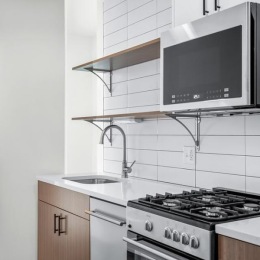Finding Illinois' Historic Home Market
Historic homes for sale in illinois offer a chance to own a piece of American architectural heritage. The Prairie State has over 9,400 vintage properties on the market, from 1850s Italianate mansions to mid-century modern masterpieces.
Top locations for historic homes in Illinois:
- Chicagoland suburbs: Evanston, Oak Park, Highland Park
- Western suburbs: St. Charles, Downers Grove
- Central Illinois towns: Springfield, Galesburg, Quincy
- Chicago neighborhoods: Logan Square, Uptown, Galewood
Popular architectural styles available:
- Victorian and Queen Anne (1860s-1900s)
- Prairie School by Frank Lloyd Wright and George Maher
- Arts and Crafts and Tudor Revival
- Carpenter Gothic and Italianate
Illinois' rich architectural history offers unique opportunities for buyers. From an 1894 Queen Anne in Galesburg to George Maher's Prairie-style homes in Evanston, these properties blend original craftsmanship with modern potential.
Demand is strong for well-preserved historic homes. A George Maher-designed home in Evanston's Dewey Historical District sold in just 15 days, showing the appetite for authentic character.
These homes range from grand estates to charming urban residences, many featuring original details like hardwood floors, leaded-glass windows, and handcrafted woodwork alongside modern updates.
A Tour Through Time: Architectural Styles in Illinois
Exploring historic homes for sale in Illinois reveals a fascinating world of architectural styles. From Victorian mansions to Mid-Century Modern homes, Illinois showcases America's evolving design sensibilities.
Victorian homes (1860s-1900s) feature elaborate ornamentation and bold, asymmetrical designs.
The Queen Anne style is a beloved Victorian variant with signature turrets, wrap-around porches, intricate "gingerbread" trim, and bay windows. The 1894 Queen Anne in Galesburg is a stunning example.
Italianate homes are inspired by Italian villas, recognizable by low-pitched roofs, wide eaves with decorative brackets, and tall, narrow windows. Many feature a square cupola or tower. Examples range from the grand Empire House in Sterling (1850) to an 1866 Italianate in Quincy.
The Prairie School movement was a distinctly American response to the Midwest landscape. Architects like Frank Lloyd Wright and George Maher pioneered the style, which features low-pitched roofs with wide eaves, strong horizontal lines, and open floor plans to harmonize with nature. A 1909 George Maher home in Evanston is a perfect example.
Arts and Crafts homes (late 1800s-1930s) reacted against Victorian ornament, emphasizing honest materials and craftsmanship. They feature exposed wood beams, built-in cabinetry, handcrafted details, and earthy color palettes.
Tudor Revival style (1890s-1940s) brought medieval English charm to American neighborhoods. These storybook homes feature steep-pitched gable roofs, decorative half-timbering, tall narrow windows, and prominent chimneys. A 1924 Tudor in Monticello is a perfect example.
Carpenter Gothic homes (mid-1800s to early 1900s) are a charming wood adaptation of Gothic Revival. They feature steep gables, pointed arches, and delicate "gingerbread" trim. A 1900 home in Carlinville is a great example.
Mid-Century Modern homes (1940s-1960s) acceptd sleek lines and minimalism. They feature flat or low-sloping roofs, large windows blurring indoor-outdoor spaces, and open floor plans. Natural materials like wood and stone reflect post-war optimism.
Key Features to Identify in Historic Homes
Key features reveal a home's era. Look for original woodwork, from intricate trim to grand staircases. Window designs are clear indicators, including leaded-glass or stained glass panels. Distinctive doors, like solid oak pocket doors, and fireplaces with original mantels are common. Also note built-in features like custom cabinetry, original hardwood floors, and unique rooflines and porches that define the character of historic homes for sale in Illinois.
Where to Find Historic Homes for Sale in Illinois
Illinois offers a variety of locations for historic homes, from busy metro areas to peaceful small towns, each with its own architectural story.
Chicagoland and North Shore Suburbs
The Chicago area is where many of the state's most sought-after historic homes for sale in Illinois can be found. These communities grew rapidly in the late 1800s and early 1900s, attracting talented architects.
Evanston is a gem known for its tree-lined streets and Prairie Style homes, especially by George Maher. A Maher-designed home in the Dewey Historical District recently sold in just 15 days, showing the value placed on preserved architecture.
Oak Park is an architecture lover's paradise, with the world's largest collection of Frank Lloyd Wright buildings. You'll also find stunning Victorian, Prairie, and Arts and Crafts homes.
Highland Park is known for the Ben Rose House, the famous "Ferris Bueller house." The story of this Mid-Century Modern home highlights the special appeal of certain historic properties.
Chicago's neighborhoods also offer wonderful opportunities. Logan Square features grand boulevards and historic Victorian and early 20th-century mansions. A 1903 mansion by Kley & Schaub is a prime example.
Uptown has a history as an entertainment hub. The Teller House Apartments exemplify adapting historic structures for modern living, converting a bank into luxury residences. You can explore more about the Uptown neighborhood to learn about its character.
Galewood is a lesser-known treasure trove of styles, including unique Mid-Century Modern homes. It has fascinating histories, like "The Miracle House" built for a church raffle.
Western Suburbs
Moving west from Chicago, several communities have carefully preserved their historic character.
Downers Grove offers a variety of historic homes, from Victorians to bungalows, many on generous lots for indoor-outdoor living.
St. Charles sits on the Fox River, a picturesque setting for its historic downtown and older homes. Its blend of styles reflects its growth as a river community.
Central Illinois
Beyond the Chicago metro area, Central Illinois offers a different flavor of historic living with more expansive properties and a quieter pace.
Springfield is the state capital and Abraham Lincoln's hometown, with deep historical significance. It has numerous historic districts with well-preserved homes, like the Inn at 835 near the State Capitol.
Galesburg shines with well-preserved architecture. The 1894 Clark E. Carr House is a remarkable example, having hosted U.S. Presidents and the first Cabinet meeting in a private home. Owning it means stewarding American history.
Quincy sits on the Mississippi River and is famous for its Victorian and Italianate homes. Its historic districts, with beautifully maintained 19th-century properties, feel magical.
Carlinville in Macoupin County offers charming small-town historic living. You can find unique properties like a 1900 Carpenter Gothic home, often with more land, appealing to those seeking a slower pace.
The Lived-In Legacy: Features, Benefits, and Challenges
Living in a historic home is an experience. When exploring historic homes for sale in illinois, you're seeing living history that blends classic craftsmanship with modern comfort.
What to Expect Inside: Unique Features and Original Details
Inside a historic Illinois home, the difference is clear. Each room reveals the careful work of craftsmen.
Original woodwork is often the crown jewel, from a grand staircase with hand-carved newel posts to intricate crown molding. The hardwood floors are often original wide-plank timber with a rich, earned patina.
Historic windows are special. Leaded-glass and stained glass panels create beautiful light. Solid oak pocket doors slide into walls, offering flexible room arrangements.
Many homes have fireplaces with original mantels that serve as gathering spots. Built-in cabinetry, like china cabinets and reading nooks, shows how builders maximized space and beauty.
Many vintage homes have thoughtful modern updates. Renovated kitchens blend new appliances with period design, and some have efficient geothermal systems. See examples of old meeting new by looking at restored historic interiors.
The Rewards and Realities of Historic Home Ownership
Owning a historic home is a rewarding but demanding lifestyle. For those who appreciate character, it's deeply fulfilling.
The unique character and craftsmanship are irreplaceable. Living where history happened, like in the Clark E. Carr House in Galesburg, adds a magical sense of history to daily life.
However, there are challenges. Maintenance requires more attention. Original systems may need updates, and restoration needs can be surprising. Finding skilled craftsmen can also be difficult.
Preservation guidelines in historic districts may govern changes to protect the neighborhood's character, meaning you can't just replace original windows without approval.
Energy efficiency is another consideration. Older homes were built for durability, not insulation, but many owners successfully upgrade them while preserving their appearance.
The Shriver Mansion is a perfect example: a stunning 163-year-old property needing an owner to polish its features. It's a trade-off of character for stewardship.
For inspiration, the story of the Henry B. Clarke House shows the care required for Chicago's oldest house.
Notable Properties and Market Insights
The historic homes for sale in Illinois market tells fascinating stories of both iconic properties and steady buyer enthusiasm for vintage charm. Some homes become legendary not just for their architecture, but for the remarkable lives they've witnessed or the cultural moments they've helped create.
Famous historic homes for sale in Illinois: Past and Present
Certain historic properties capture our imagination in ways that go far beyond typical real estate listings. These homes become part of Illinois' cultural fabric, drawing wide attention.
The Clark E. Carr House in Galesburg stands as perhaps the most historically significant residential property in Illinois. Built in 1894, this magnificent home hosted the first U.S. Cabinet meeting ever held in a private residence. Both President Ulysses S. Grant and President William McKinley walked through its halls, making it a true "collector's piece for history enthusiasts." Owning such a property means stewarding a "living legacy" of American political history.
The Ben Rose House in Highland Park gained worldwide fame as the "Ferris Bueller house" from the beloved 1986 film. This striking Mid-Century Modern residence became so iconic that its glass pavilion and dramatic hillside setting are instantly recognizable. The home spent five years on the market, its fame creating unique challenges for potential buyers concerned with privacy from curious visitors.
George Maher's Prairie Style masterpieces in Evanston represent architectural excellence at its finest. A stunning 1909 Maher-designed home recently hit the market for the first time in over fifty years, creating immediate excitement. The six-bedroom Prairie-style residence went pending in just 15 days, demonstrating how quickly discerning buyers recognize quality. The home's original integrity - never subdivided or altered - made it particularly appealing.
These remarkable properties remind us that some homes transcend their role as mere shelter, becoming treasured pieces of Illinois' cultural and architectural heritage.
Understanding the Current Market for Vintage Properties
The market for vintage properties across Illinois shows encouraging signs of vitality and appreciation for historic character. Buyers today seem increasingly drawn to homes with stories to tell and craftsmanship that stands the test of time.
Well-preserved homes generate significant interest in today's market. The quick sale of that George Maher home in Evanston perfectly illustrates this trend. When a historic property maintains its original character and architectural integrity, buyers take notice. Buyers appreciate homes that have preserved authentic details.
Preservation value drives buyer decisions more than ever before. Many buyers actively seek homes with "good bones" that they can lovingly restore and maintain. They're looking for properties where they can honor the original vision while thoughtfully integrating modern conveniences. This approach appeals to people who see themselves as temporary stewards of architectural history.
Single-family integrity adds tremendous appeal, especially for larger historic homes that could have been subdivided. Properties that have remained whole family residences offer buyers the full historic living experience - grand staircases, flowing room layouts, and the sense of space the original architects intended.
The active market includes over 9,400 vintage properties currently available across Illinois, from sprawling estates like The Empire House in Sterling (built in 1850 on 13+ acres) to charming urban residences. This variety ensures that buyers with different preferences can find their perfect piece of Illinois history.
For those interested in how historic buildings can be transformed into modern living spaces, we invite you to Explore Chicago historic building apartments.
Your Guide to Buying and Preserving a Piece of History
Finding and caring for a historic home for sale in Illinois requires a thoughtful approach and the right support network. When we step into this world, we're not just house hunting—we're becoming guardians of architectural heritage.
Finding Your Dream Historic Home
The search for the perfect historic property is part of the magic, a treasure hunt for a home waiting for its next caretaker.
Specialized real estate agents who focus on historic properties become invaluable partners. These professionals understand the quirks of old homes, from settling sounds to spotting original hardwood under carpet. They also grasp the unique market dynamics, from how quickly a George Maher Prairie-style home might sell to what features make Victorian buyers swoon.
Online listing portals offer another starting point. We recommend getting specific with search terms like "Queen Anne Victorian" or "Prairie School architecture" in your target area. Many platforms now allow filtering by construction date, which can help narrow down the 9,400+ vintage properties available across Illinois.
Historic districts deserve special attention during your search. These protected neighborhoods maintain their architectural character through preservation guidelines. Living in a historic district means joining a community that values its past.
Local historical societies often become unexpected allies. These organizations frequently hear about properties before they hit the market and possess deep knowledge about neighborhood history. A conversation with a local historical society might reveal insights about upcoming listings.
Resources for Historic Homeowners
Once you've found your piece of history, the real trip begins. Fortunately, Illinois offers a robust network of support for historic homeowners who want to honor their property's legacy.
Preservation societies like Landmarks Illinois provide education and advocacy. These organizations understand the unique challenges, from finding appropriate restoration materials to navigating preservation regulations. They offer workshops, technical assistance, and connections to other historic homeowners.
Local historical commissions become important partners, especially for homes in designated historic districts. Think of them as collaborators in maintaining neighborhood character. They help ensure that renovations improve rather than diminish a home's historic value.
Finding skilled restoration contractors makes all the difference. These craftspeople understand traditional construction methods and materials, from restoring plaster walls to sourcing appropriate hardware. Always ask to see portfolios of previous historic projects.
The National Register of Historic Places offers recognition for properties of national historical significance. While listing doesn't impose restrictions on private homeowners, it acknowledges a home's importance and may open doors to preservation incentives.
For practical guidance, resources like FAQs about historic properties address common questions about living in and maintaining vintage homes. These guides help with everything from dealing with original windows to updating electrical systems safely.
Conclusion
Illinois' diverse collection of historic homes for sale in illinois offers something truly special for those seeking a residence with soul. Whether you're drawn to the grand Victorian mansions of Galesburg, the iconic Prairie Style masterpieces of Oak Park, or the charming Carpenter Gothic treasures of Central Illinois, the Prairie State holds a remarkable mix of architectural history waiting for the right steward.
Owning a piece of history means becoming part of something bigger than square footage. It's about being surrounded by original hardwood floors, admiring sunlight through leaded-glass windows, and appreciating handcrafted woodwork from generations of artisans.
Yes, historic homes come with unique considerations. Maintenance needs and preservation guidelines are real aspects of ownership that require thoughtful planning. But for those who choose this path, the rewards far outweigh these challenges. The unparalleled character and deep connection to the past create a living experience that cannot be replicated.
The active market for well-preserved vintage properties throughout Illinois speaks to a growing appreciation for these timeless treasures. From the swift sale of George Maher's Prairie-style masterpiece in Evanston to the enduring appeal of presidential homes like the Clark E. Carr House, buyers clearly value the authentic craftsmanship and unique stories these homes offer.
At The Teller House Apartments by Flats®, we understand the magnetic pull of living within historic architecture. Our change of a historic bank building into modern living spaces demonstrates how vintage charm blends beautifully with contemporary comfort. We believe history can be a vibrant part of our daily lives, enriching our experiences with beauty and meaning.
For those interested in experiencing this perfect marriage of historic character and modern convenience, we invite you to Explore leasing historic properties in Chicago.
